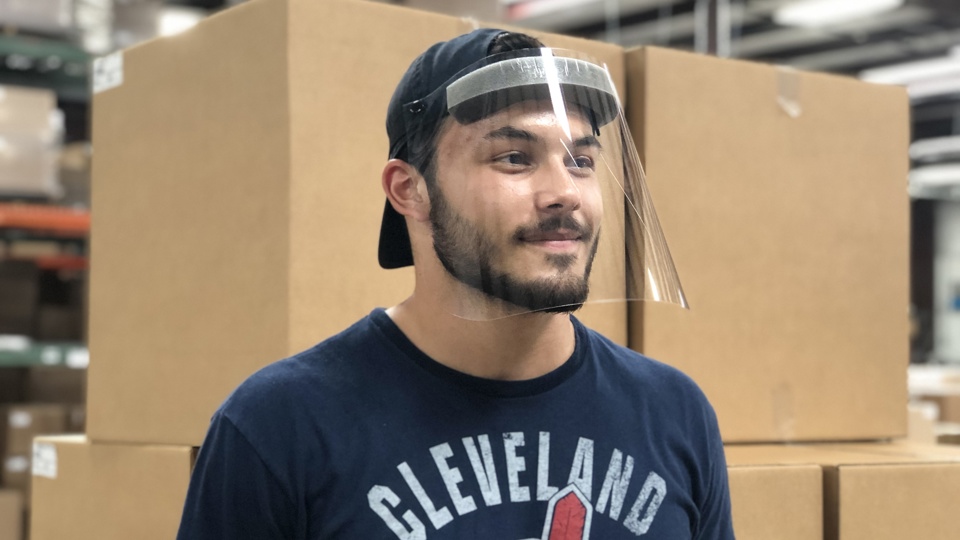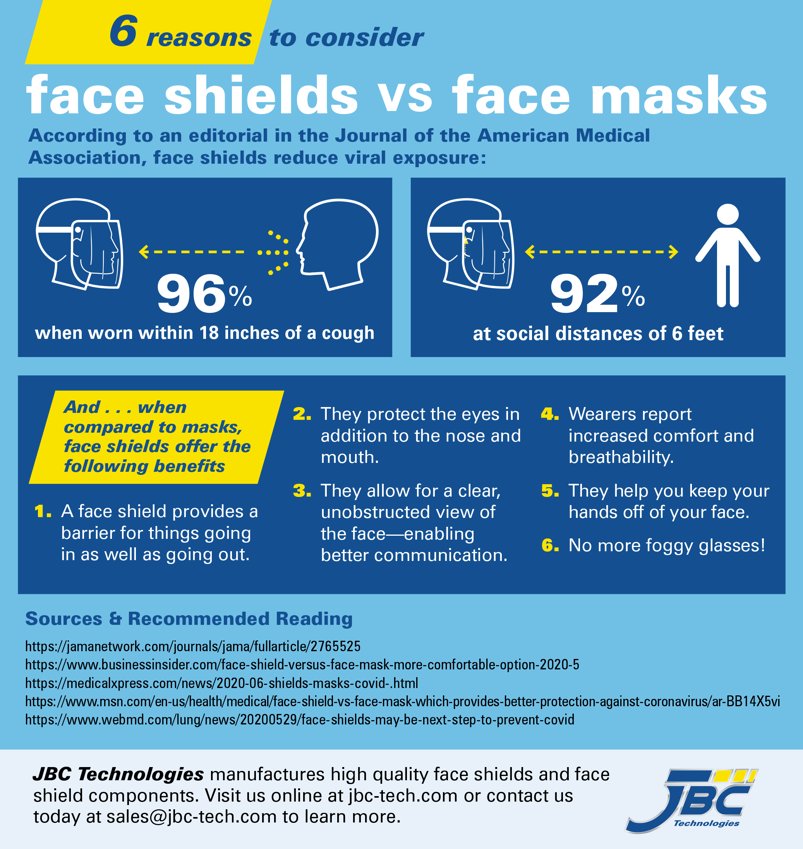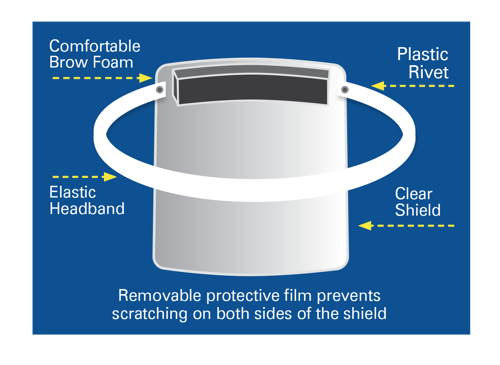Face Shields vs Face Masks

As the COVID-19 pandemic rages on the evidence in support of protective face coverings as an effective means to control the spread of the coronavirus continues to mount. The last several months, in particular, have seen a growing acceptance of the wearing of face masks both at work and when out in public. The now-ubiquitous PPE, a symbol of the pandemic in its own right, has transitioned from being considered a quirky rarity to a mainstream accessory. In fact, those not wearing face coverings are quickly becoming the outliers as more and more people accept the science that supports their efficacy.
As we continue to adapt to regularly covering our faces in public, we are quickly realizing that cloth face masks aren’t without their downsides. They can be hot, especially when worn outside during warmer months, they can cause your glasses to fog up, and, because we’re constantly adjusting them, we’re more apt to touch our faces while wearing them. On top of all this, not being able to see the expressions on the faces of others can be downright disconcerting. Enter the plastic face shield.
Plastic face shields, once seen as the exclusive domain of medical professionals, are now more widely available to the general public than ever before. With the simplest designs featuring nothing more than a thin, plastic sheet, foam forehead cushion and elastic strip, protective face shields may prove an attractive option for people unable to wear face mask for health reasons or for those of us simply tired of hiding behind a mask.
Are Plastic Face Shields Effective Against Coronavirus?
While data is still coming in on the subject, current research shows that face masks are still considered the best option when it comes to doing your part to prevent the spread of the coronavirus when around others. According to the CDC, the coronavirus is spread between people who are in close contact with one another (within about 6 feet), through respiratory droplets produced when an infected person coughs, sneezes or talks. Face masks work because they create a seal around the nose and mouth that prevents a large portion of these droplets from ever getting out into the air in the first place.
Face shields, while not designed to provide a tight-fitting seal around the nose and mouth like a fabric or cloth mask, offer a solid physical barrier - often extending below the chin and back toward the wearers ears - that protects not only the nose and mouth but also the eyes from exposure to potentially infected airborne droplets. It’s this same barrier that, much like the face mask, also prevents the virus from being spread by the wearer to others.
Scientific studies looking at face shields as protection against the spread of viruses through aerosolized droplets are limited, especially outside of a medical setting, but experiments have been conducted in an effort to quantify their efficacy. Once example was cited in a recent editorial in the Journal of the American Medical Association. The 2014 study, pitting face shields against aerosol droplets from a cough simulator, found that face shields reduced viral exposure by as much as 96% when worn within 18 inches of the “cough” source and by 92% at the current social distancing recommendation of 6 feet.
Are Face Shields Better Than Face Masks?
In this Today Show video clip, NBC investigative and consumer correspondent Vicky Nguyen takes a look at the current state of the face shield vs face mask debate. The piece references the very same CDC study while also highlighting several of the other benefits of face shields including that it’s easier to talk, easier to breathe and, in general, more comfortable to wear a face shield than it is a face mask or cloth face covering.
According to the CDC, face masks are still considered the “gold standard” in viral protection for the general public. While it’s still not clear how much protection face shields may ultimately provide both the wearer and those around them, anecdotal evidence suggests that they just might be a viable option for those who can’t wear a face mask due to breathing issues or when used along with a face mask and social distancing as an added layer of protection.
Six reasons to consider face shields vs. face masks.
- Provides a physical barrier that protects you and others
- Protects the eyes in addition to the nose and mouth
- Allows for a clear, unobstructed view of your face—enabling better communication
- Increases comfort and breathability
- Helps keep your hands off of your face
- No more foggy glasses!

Resources to learn more about face shields vs. face masks.
Because we know that the best decisions are informed decisions, here a few links to help you learn more about face shields and face masks and the fight against the spread of coronavirus.
- JAMA Network - Face Shields and Containment of COVID-19
- Business Insider - Face Shields Versus Face Mask
- WebMD - Face Shields May Be Next Step to Prevent Covid
JBC offers face shields and face shield components
JBC Technologies manufactures high-quality face shields and face shield components. Learn more here.
